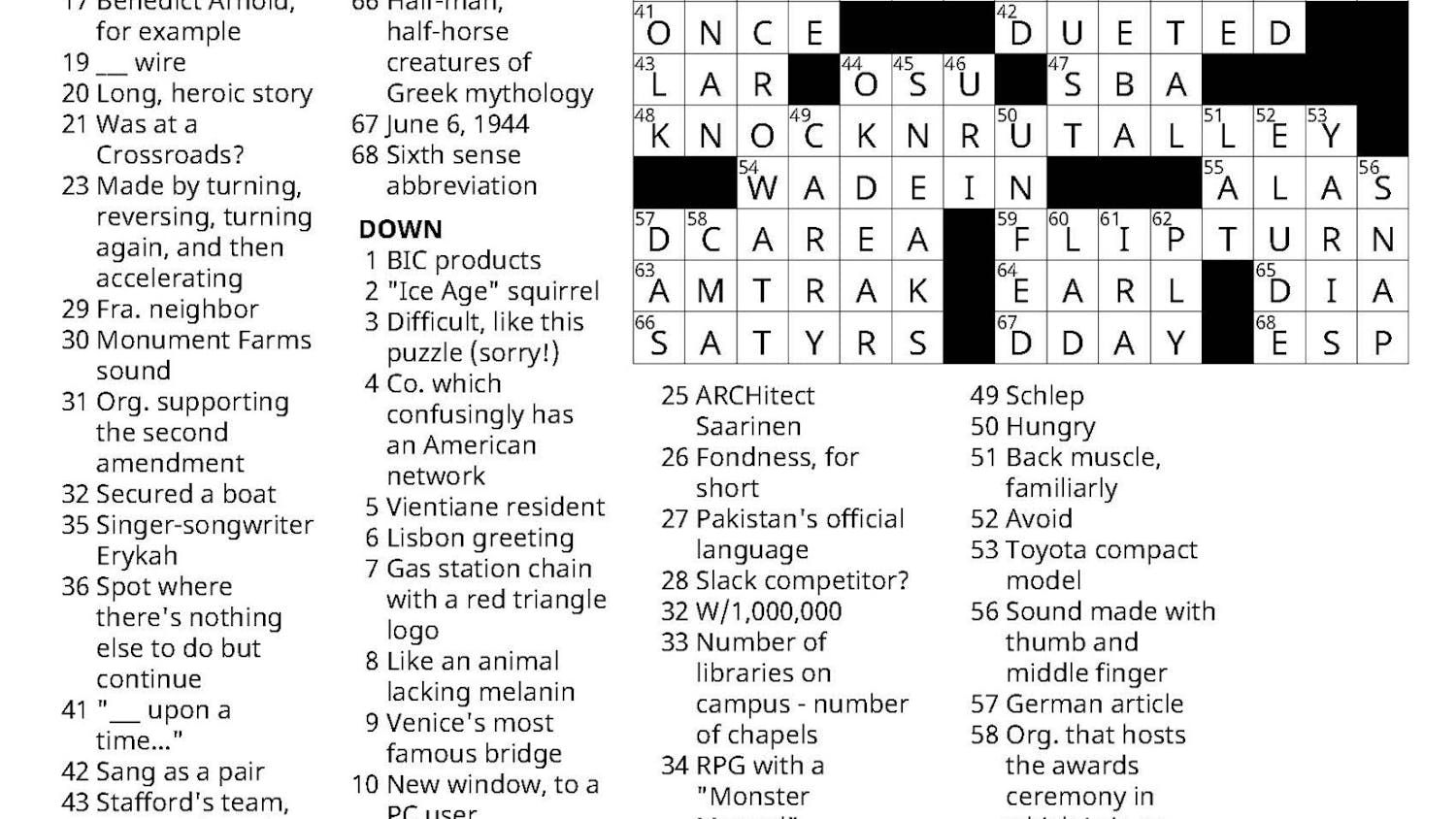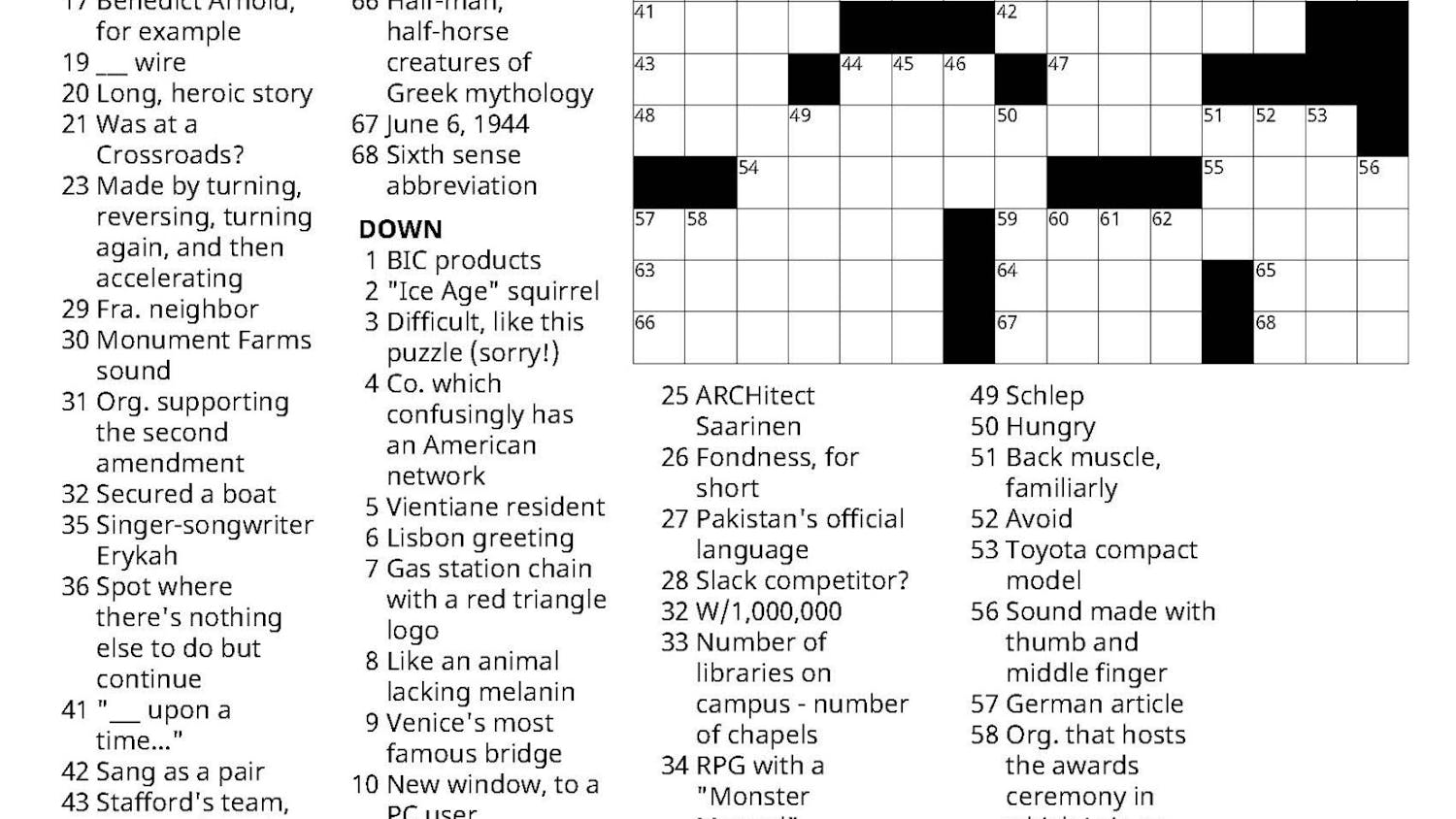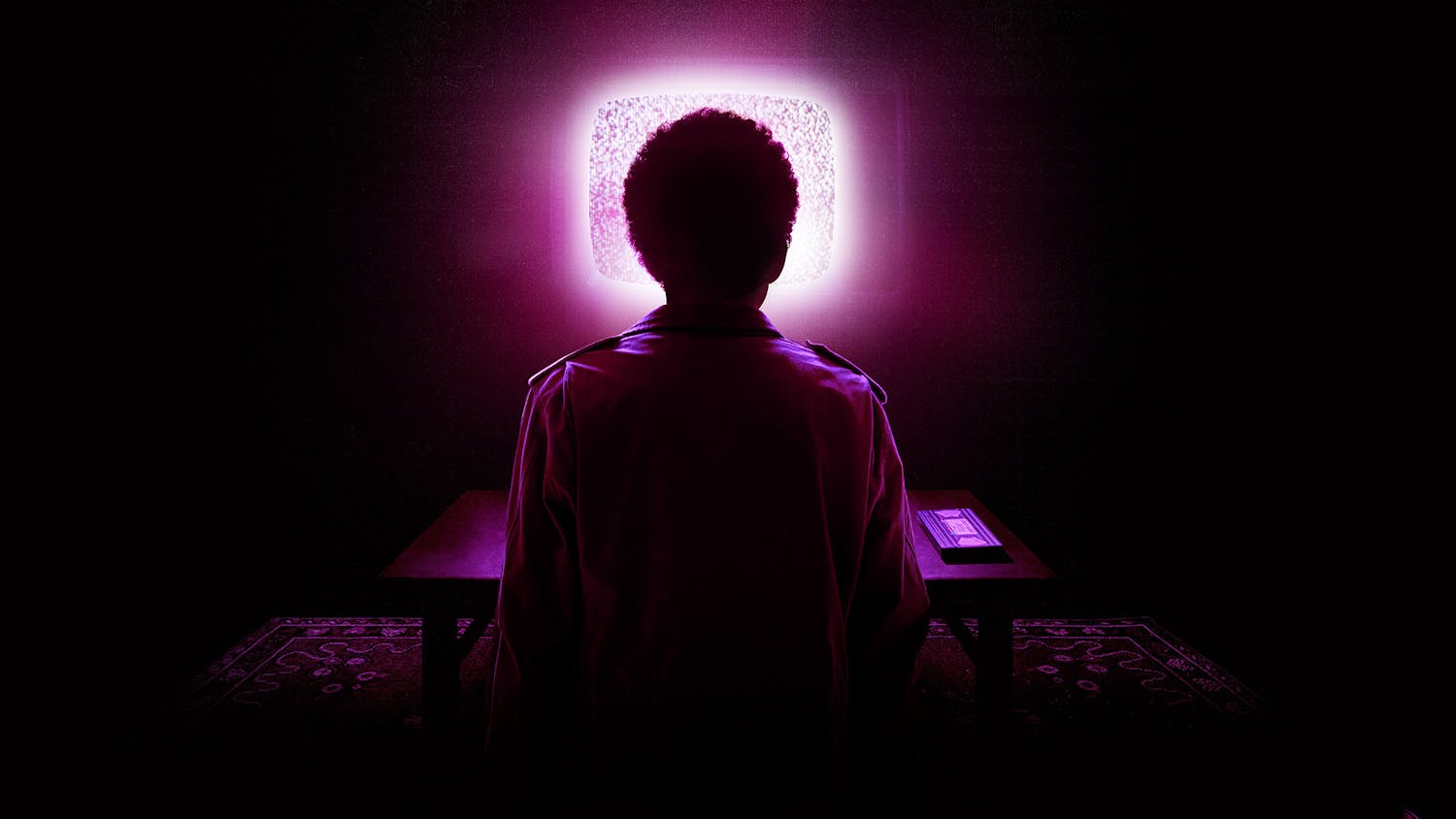At the intermission of the Heath Quartet’s concert on the night of Friday, Oct. 11, I was chatting with my friend Henry Ganey ’22 outside the Mahaney Arts Center’s Robison Hall, and mentioned a certain Shakespeare phrase.
“‘If music be the food of love, play on,’” I said, quoting the opening lines of “Twelfth Night.”
Ganey’s eyes lit up. “I would say that the standing ovation at the end of [Ludwig van Beethoven’s Quartet no. 8 in E. Minor] would be the quintessential example of the aforementioned quote,” he said.
He was not exaggerating. Despite the unspoken rule that an audience can give a standing ovation only after a program’s end, the crowd went bananas at the end of the British ensemble’s first act.
Throughout the last week, the Heath Quartet — comprised of violist Gary Pomeroy, cellist Christopher Murray and violinists Oliver Heath and Sara Wolstenholme — performed three times for students on Saturday, Oct. 5, Tuesday, Oct. 8 and Friday, Oct. 11. They also co-taught three classes: two music theory courses with Christian A. Johnson Professor Emeritus of Music Peter Hamlin and Professor of Music Larry Hamberlin, and “Sensation and Perception,” a neuroscience course taught by Assistant Professor of Psychology Mike Dash.
Allison Carole Coyne, performing arts series director, sent an engagement survey about the Quartet’s visit to all students in the above classes, and the responses were glowing. “Thus far, 100% of student responders have said the quartet’s visit was relevant to their coursework and that they’d highly recommend such visits to their professors in the future,” Coyne said.
The first class I attended to see the Heath Quartet teach was Introduction to Music with Hamberlin. One student asked the musicians why they only play works by other composers as opposed to writing their own music. Heath Quartet Cellist Murray compared the group to “a traveling theater troupe,” suggesting that a cellist who interprets the music of Ludwig van Beethoven (1770-1827) is similar to an actor personalizing a role. The foundations of the work stay the same, but the performer brings a unique understanding of the piece to make good art.
[pullquote speaker="Christopher Murray" photo="" align="center" background="on" border="all" shadow="on"]As a musician, you have this little monkey inside of you that’s doing music all the time. This little guy is always working out stuff.[/pullquote]
At the lecture for students studying sensation and perception, the quartet’s playing invoked conversations about the scientific nuts-and-bolts of classical music.
Murray told the class that being a cellist has its cerebral quirks. “As a musician, you have this little monkey inside of you that’s doing music all the time,” Murray said, smiling. “This little guy is always working out stuff.”
When asked about their vigorous movements while playing, violinist Wolstenholme referred to the importance of visual elements to a performance. After jokingly pantomiming a violent wave of her bow, she explained that the group also uses more subtle body language such as eye contact to communicate with each other on stage.
“How much of our auditory experience is visual?” Professor Dash asked. This question prompted a neuroscience experiment. Dash asked Heath and Wolstenholme, the Quartet’s violinists, to stand apart on Robison Hall’s stage and play some Beethoven. While the violinists fiddled away, I heard the instruments more individually. But seeing the musicians spread apart so far made it harder for me to concentrate on their music. My sensory experience was vexing; I wanted to see these musical Avengers assemble.
The four musicians also examined more contemporary classical music. They showed Dash’s class “Memento,” a string quartet by the Scottish composer James Macmillan. Murray’s cello dominated the song — you could almost hear the misty peacefulness of the Highlands as his cello strummed a dissonant, airy theme.
The Heath Quartet’s classes were thought-provoking, but their concerts stole the show. The group’s performance on the night of Saturday, Oct. 5 was quite good, and from what I’ve gleaned from an audio recording, the matinée on the following Tuesday was just as lovely.
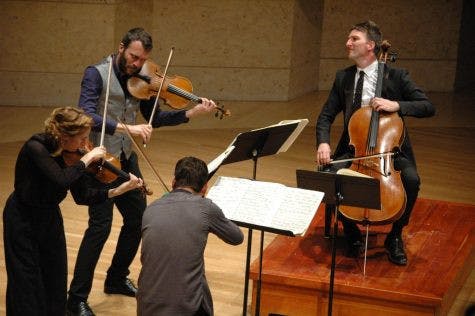
Heath Quartet members performed some of Beethoven’s classics during their performance at Robison Hall.
But the Heath Quartet saved their best night for last. At their final performance, they delivered Beethoven string quartets like nobody’s business.
Heath’s team began with Beethoven’s Quartet no. 2 in G Major, op. 18, no. 2 (1799). The opening theme was done gently — the violins scintillated back and forth in bright scales. The two instruments sang to each other, as if courting.
Of particular interest during Quartet no. 2 was Murray’s cello playing. While other Heath members looked at their music with intense concentration as they strummed their solos, Murray gazed up at the ceiling during his, smiling serenely. His playing had a similar quality. It was reminiscent of the elegant cello parts in the “Swan” movement of Camille Saint-Saën’s “Carnival of the Animals.” Murray’s calm playing guided the rest of the ensemble through this charming reverie of a piece.
Next up on the program was Beethoven’s Quartet no. 8 in E Minor, op. 59 no. 2 (1808). During the piece, Pomeroy’s viola parts accentuated harmonic counterpoint. It is not often that one gets to fully hear a violist, but Pomeroy’s subtle playing kept the quartet grounded in the melancholy key of E Minor.
The final movement showcased Oliver Heath’s virtuosity. Great violin music is never a given — some violinists have a habit of caterwauling during crescendos. Thankfully, Heath stayed away from such theatrics, subtly guiding the music with uncannily fitting dynamics. It was easy to see after the “Presto” movement why the Heath Quartet begins with “Heath.” The quartet’s end was absolute dynamite.
The highlight of the evening was Quartet no. 15 in A Minor, op 132 (1823-1825). The quartet is late-period Beethoven; it lacks Hayden-esque time schemes or grace notes. Quartet no. 15, rather, is a Romantic vision of grace and majesty. The performance’s best music was during the “Molto adagio” third movement. The four musicians played the same notes for the first few minutes. The instruments’ synchronization yielded a natural ambience; harkening white waves splashing onto a beach or a horse walking through a field. Suddenly, the movement became a heart-stopping aria.
The quartet’s third movement shocked Madison Middleton ’22.5. “During that movement, I… I thought, ‘This is changing me...'” Middleton said.
The Heath Quartet triumphed during their week at the college, and I look forward to the continuation of their residency next January and May. As I left the Mahaney Center last Friday, a thought occurred to me. For many Americans, 2020 means another grueling election cycle, an uncertain beginning to a new decade. For all we know, the 2020s could get more hectic than the 1920s.
But life, sometimes, is really quite good. I am grateful that my New Year beckons the Heath Quartet’s return from across the Atlantic, eleven other Beethoven string quartets, and more enchanting music at Robison Hall.
Heath Quartet stuns during class visits, performances
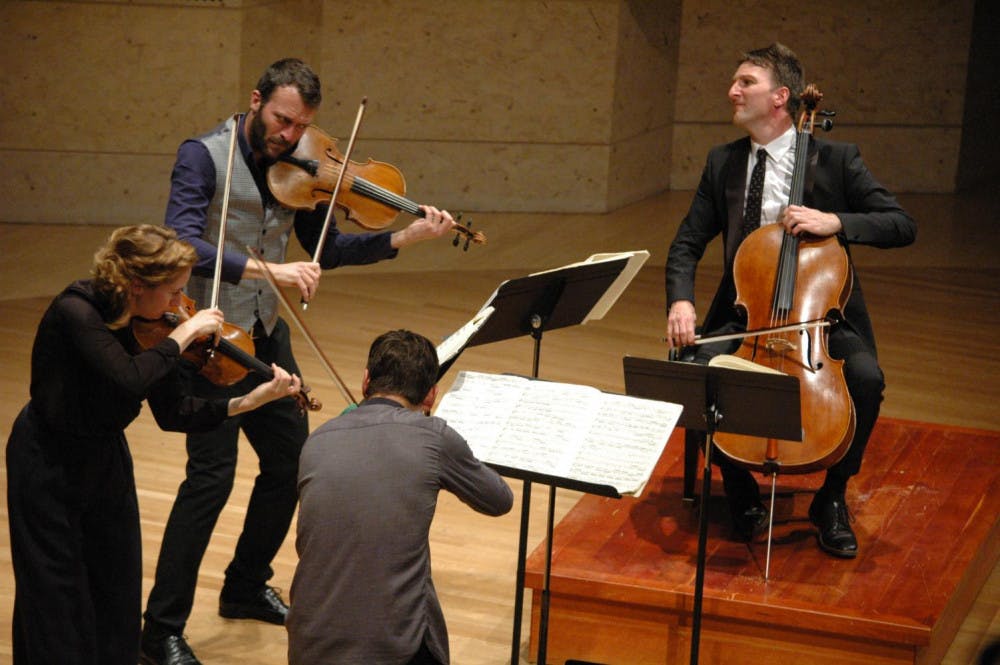
COURTESY PHOTO/AARON KIMBALL
Comments

